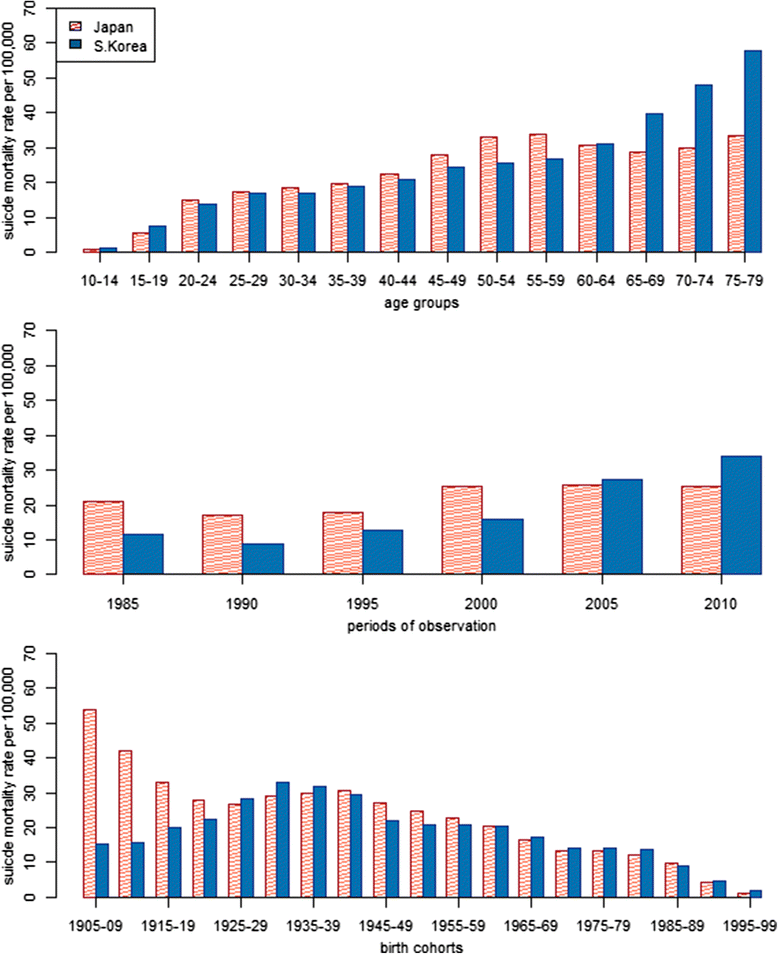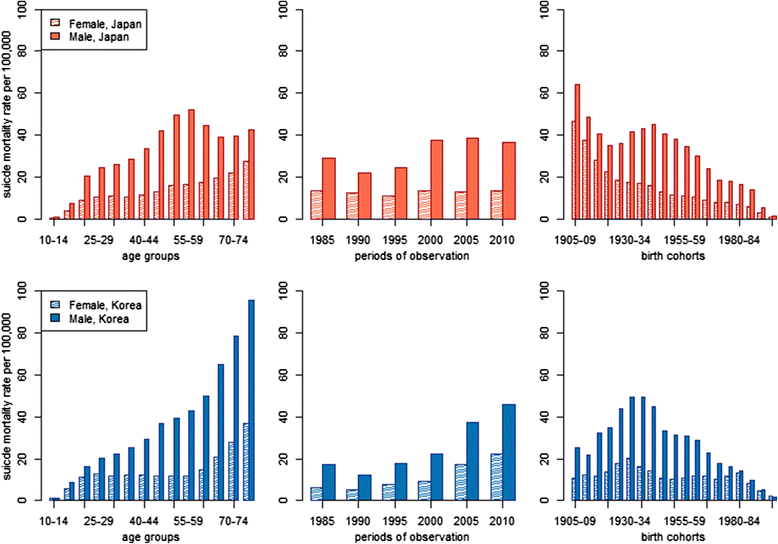A population-based analysis of increasing rates of suicide mortality in Japan and South Korea, 1985-2010
- PMID: 27107481
- PMCID: PMC4841973
- DOI: 10.1186/s12889-016-3020-2
A population-based analysis of increasing rates of suicide mortality in Japan and South Korea, 1985-2010
Abstract
Background: In the past two decades, rates of suicide mortality have declined among most OECD member states. Two notable exceptions are Japan and South Korea, where suicide mortality has increased by 20 % and 280 %, respectively.
Methods: Population and suicide mortality data were collected through national statistics organizations in Japan and South Korea for the period 1985 to 2010. Age, period of observation, and birth cohort membership were divided into five-year increments. We fitted a series of intrinsic estimator age-period-cohort models to estimate the effects of age-related processes, secular changes, and birth cohort dynamics on the rising rates of suicide mortality in the two neighboring countries.
Results: In Japan, elevated suicide rates are primarily driven by period effects, initiated during the Asian financial crisis of the late 1990s. In South Korea, multiple factors appear to be responsible for the stark increase in suicide mortality, including recent secular changes, elevated suicide risks at older ages in the context of an aging society, and strong cohort effects for those born between the Great Depression and the aftermath of the Korean War.
Conclusion: In spite of cultural, demographic and geographic similarities in Japan and South Korea, the underlying causes of increased suicide mortality differ across these societies-suggesting that public health responses should be tailored to fit each country's unique situation.
Keywords: Age-period-cohort analysis, Intrinsic estimator model, Japan; South Korea; Suicide.
Figures




References
-
- OECD . OECD Factbook 2014. OECD Publishing. 2014.
-
- Durkheim E. Suicide: A study in sociology (JA Spaulding & G. Simpson, trans.) Glencoe, IL: Free Press. (Original work published 1897); 1951.
-
- Stack S. Suicide: a 15‐year review of the sociological literature part I: cultural and economic factors. Suicide Life-threat. 2000;30(2):145–162. - PubMed
-
- Stack S. Suicide: a 15‐year review of the sociological literature part II: modernization and social integration perspectives. Suicide Life-threat. 2000;30(2):163–176. - PubMed
-
- Wray M, Colen C, Pescosolido B. The sociology of suicide. Annu Rev Sociol. 2011;37:505–528. doi: 10.1146/annurev-soc-081309-150058. - DOI
MeSH terms
Grants and funding
LinkOut - more resources
Full Text Sources
Other Literature Sources
Medical
Miscellaneous

